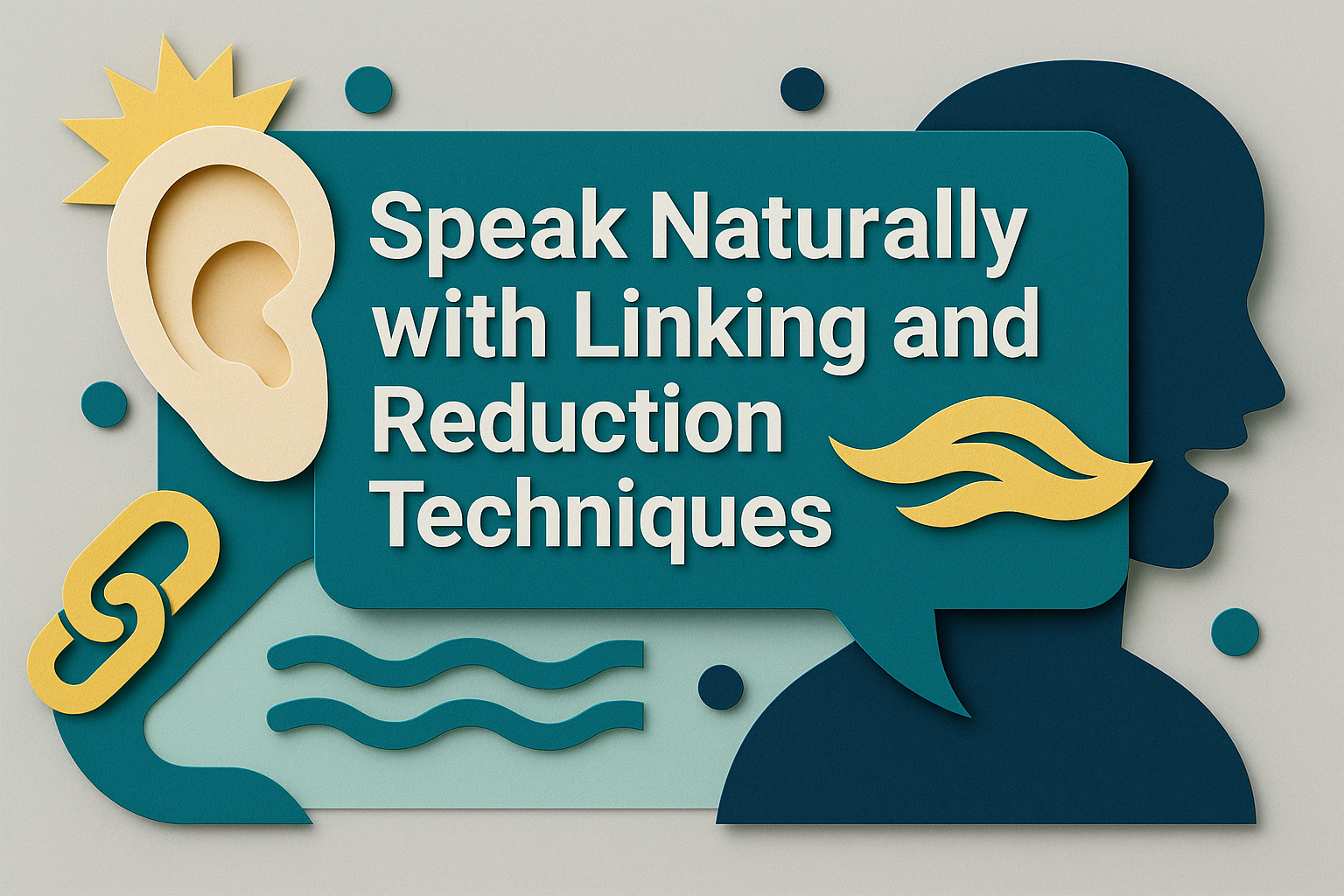Speak Naturally with Linking and Reduction Techniques
Level: Advanced | Date: April 24, 2025
혼자서 기사를 소리 내어 읽거나 튜터를 따라 각 단락을 반복해서 읽으세요. 레벨...
Sound More Natural: Mastering Linking and Reduction
What Are Linking and Reduction?
Linking happens when the last sound of one word connects smoothly to the first sound of the next word. Reduction is when certain sounds in a word become softer or even disappear to make speaking faster and smoother.
Together, these techniques make English sound more fluid, natural, and fast. If you want to understand native speakers better — and be understood more easily — learning to link and reduce is a game-changer.
Examples of Linking
- Consonant + Vowel Linking: “Turn off” sounds like “tur-noff.”
- Same Sound Linking: “Big game” sounds like “bigame.”
- Consonant + Consonant Linking: “Last train” sounds like “lastrain.”
Examples of Reduction
- “Going to” becomes “gonna”
- “Want to” becomes “wanna”
- “Let me” becomes “lemme”
These are not slang — they are real patterns used in everyday business and casual English.
Why It Matters for Professionals
If you’re preparing for a presentation, leading a meeting, or just making small talk at a networking event, using linking and reduction naturally can help you sound more fluent and confident. It also helps you listen faster and catch more details when others speak.
How to Practice
1. Read Aloud
Find a short article (like this one!) and read it aloud slowly. Pay attention to how words connect.
2. Listen and Imitate
Choose a short business podcast or video. Pause after each sentence and try to repeat exactly what you hear.
3. Record Yourself
Compare your speech to the original. Listen for smooth connections and natural reductions.
One Small Step Today
Pick one reduction or linking pattern today and use it in your next conversation. It could be as simple as saying “gonna” instead of “going to.” Focus on just one change and practice it until it feels natural. As you build confidence, you can add more linking and reduction patterns to your daily speech. Remember, fluency is not about perfection—it’s about consistent progress. Small changes, practiced daily, create big improvements in how natural and confident you sound over time. Every conversation is a chance to grow.
Vocabulary
Key Terms
- Linking (n.) – Connecting the sounds of two words smoothly. Example: Linking helps you sound natural when speaking English.
- Reduction (n.) – Shortening or softening sounds in words. Example: Native speakers use reduction to speak faster.
- Blend (v.) – Mix smoothly together. Example: Good speakers blend their words naturally.
- Fluid (adj.) – Flowing smoothly and easily. Example: His English sounds very fluid.
- Catch (v.) – Understand or hear something clearly. Example: I couldn’t catch everything he said.
- Consonant (n.) – A speech sound that is not a vowel. Example: The word “train” starts with a consonant.
- Vowel (n.) – A speech sound like a, e, i, o, or u. Example: Every English word has at least one vowel.
- Pattern (n.) – A regular way of doing something. Example: Linking is a common speaking pattern.
- Fluent (adj.) – Able to speak a language easily and naturally. Example: She is fluent in English and Spanish.
- Pause (v.) – Stop for a short time. Example: Pause after each sentence to practice.
5 Questions About the Article
Comprehension Check
- What is linking in English speaking?
- What happens during reduction?
- How can linking and reduction help busy professionals?
- What is one way you can practice linking and reduction?
- Why does the article say small changes make a big difference?
5 Open-Ended Discussion Questions
Think and Share
- How do you feel when you hear native speakers using linking and reduction?
- Have you ever tried to imitate a native speaker? How did it go?
- Which reduction sounds easiest for you to use?
- Why do you think many English learners don’t practice linking and reduction?
- What strategies help you sound more natural when speaking another language?
Call to Action
Want more quick tips to boost your English? Sign up for the All About English Mastery Newsletter and get new lessons delivered straight to your inbox!
Follow our YouTube Channel @All_About_English for more great insights and tips.



